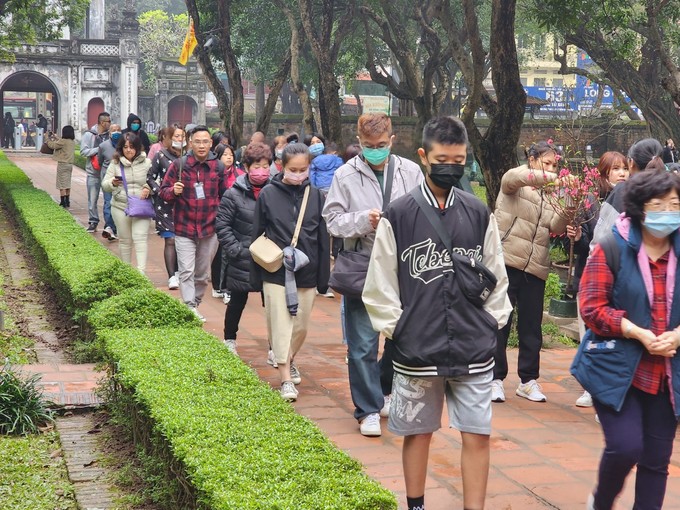Tourism is still the brightest economic sector in the first months of this year. In the first quarter of 2024, the country attracted more than 4.6 million international visitors, up 72 percent compared to the same period last year.

In the first quarter of 2024, the country attracted more than 4.6 million international visitors. (Photo: SGGP)
The sector also served 30 million domestic tourists, up 9.1 percent; revenue from tourism saw an increase of 46.3 percent; and revenues from accommodation and catering services rose 13.4 percent compared to the same period in 2023. Many regions and localities experienced high growth rates in both service revenue and tourist numbers.
Tourism models, such as green tourism, community-based tourism, agritourism, and other forms that exploit and utilize natural resources reasonably have received significant investment.
This year, the Vietnam International Travel Mart (VITM) in Hanoi has also chosen the theme "Green Transformation for Sustainable Development" to accelerate the transition of the country’s non-smoke industry and the "frontier economy" of localities.
Green transformation is a fundamental and comprehensive requirement from strategic development planning, legal policies, and building effective coordination mechanisms to mobilize resources, use technology, investment, and finance, to practical actions for green transformation.
It moves from activities using resources and causing environmental pollution to green, environmentally friendly solutions that meet the demands of sustainable development across the three pillars of the economy, society, and the environment, and satisfy current needs without effects of future benefits.
Tourism is a comprehensive economic sector with high interdisciplinarity, inter-regional connectivity, and socialization. Therefore, the green transformation of tourism always requires a multidisciplinary approach and intersectoral coordination. The country’s tourism industry needs to avoid tourism development mistakes such as concretization and environmental vulnerability that are seen in popular destinations, such as Sa Pa, Tam Dao, Da Lat, and Phu Quoc, causing the loss of natural beauty.
Green transformation must become a core content in the development of strategies, investment planning, and design of tours, routes, destinations, and the behavior of both tourists and tourism practitioners. The process of transformation requires involvement and leadership from the central and local governments, close coordination with the private sector, local communities, and the participation of tourists.
Green transformation of the tourism industry is not only focused on green tourism products, promoting the development of travel and passenger transportation, and accommodation growth, but also created a driving force for a range of value chains of the sectors including culture, event, restaurant, cuisine, and commercial development.
Accordingly, it needs a coordination with a systematic approach; technical support; construction, and issuance of specific, clear, and easily implementable regulations and guidelines for new economic models in the tourism sector, such as sharing economy, circular economy, night tourism, and management regulations for health tourism, community-based tourism, ecotourism, agricultural tourism, adventure tourism, and other new forms of tourism.
Priority should be given to the development of smart tourism, digitizing all data related to tour guides, travel companies, and accommodation facilities; interconnectivity of the management agencies, the development of travel mobile applications, cooperation to effectively promote tourist products and exploit tourism resources in each locality.
The industry needs to solve problems and difficulties in transportation, infrastructure, tourism workforce, and create an innovative and creative startup ecosystem to make tourism more attractive and strongly develop Vietnamese tourism in accordance with green transformation and sustainable development.
By Dr. Tran Huu Hiep - Translated by Kim Khanh